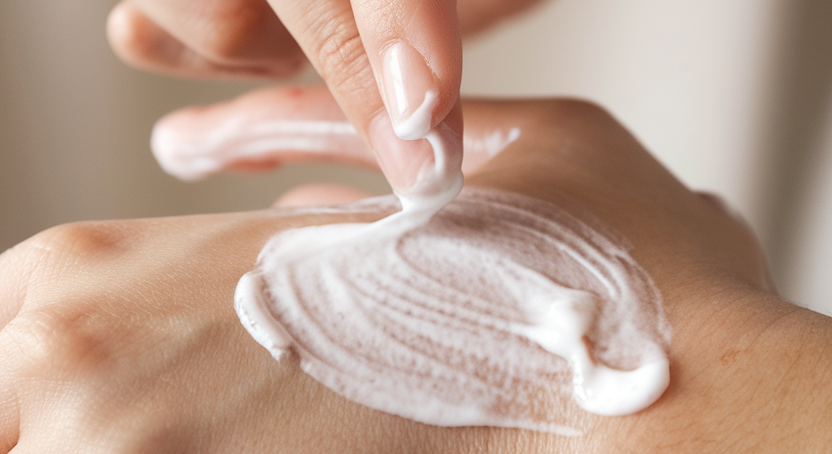Nanoparticles in Skincare: Benefits, Risks, and the Ongoing Controversy
By:
Kevin Chong
On
10/11/2024Reading time:
5 min
Summary:
In recent years, nanoparticles have made their way into skincare products, thanks to their unique properties that enhance the effectiveness and feel of products. From sunscreens to anti-aging creams, nanoparticles help improve texture, stability, and product penetration. However, these tiny particles, often less than 100 nanometers in size, have sparked debates over their safety and long-term effects on skin health and the environment. In this post, we’ll explore what nanoparticles are, their benefits, and the controversy surrounding their use in skincare.

What Are Nanoparticles?
Nanoparticles are ultra-small particles that are measured on the nanoscale, meaning they are one-billionth of a meter in size. Their small size allows them to penetrate the skin more effectively than larger particles, making them attractive for skincare formulations. Nanoparticles can be made from a variety of materials, including zinc oxide, titanium dioxide, liposomes, and even gold and silver. They are primarily used to enhance the efficacy of active ingredients, making products more efficient and long-lasting.
Common Uses of Nanoparticles in Skincare
Nanoparticles serve various functions in skincare products, such as:
Sunscreens: Zinc oxide and titanium dioxide nanoparticles are widely used in sunscreens for their effective UV-blocking capabilities without the white cast associated with larger particles.
Anti-Aging Creams: Nanoparticles help deliver ingredients like retinol, peptides, and vitamins deeper into the skin layers, potentially improving the product’s effectiveness.
Moisturizers and Serums: Encapsulation in nanoparticles allows for gradual release, maintaining hydration and nourishment over extended periods.
The Benefits of Nanoparticles in Skincare
Nanoparticles offer several advantages, making them valuable in cosmetic formulations:
Enhanced Penetration: Their small size allows nanoparticles to penetrate deeper into the skin, delivering active ingredients directly to targeted layers.
Improved Stability: Nanoparticles can help stabilize sensitive ingredients, such as retinol and vitamin C, preventing them from degrading when exposed to air or light.
No Residue: In sunscreens, nanoparticles allow for effective sun protection without the white residue that traditional sunscreens sometimes leave on the skin.
The Controversy Surrounding Nanoparticles
Despite these benefits, nanoparticles in skincare are controversial, primarily due to potential safety and environmental concerns:
1. Skin Penetration and Toxicity
Concern: Nanoparticles may penetrate too deeply into the skin, potentially reaching the bloodstream and affecting organs.
Studies: Research is ongoing, with some studies indicating that nanoparticles in products like zinc oxide and titanium dioxide sunscreens generally do not penetrate past the outermost layer of skin. However, concerns remain, particularly for products applied to damaged or sensitive skin, where nanoparticles could potentially penetrate more deeply.
2. Environmental Impact
Concern: Once washed off, nanoparticles in products (such as sunscreen) can enter water systems, where they may affect marine life.
Studies: Nanoparticles like zinc oxide and titanium dioxide have been shown to accumulate in aquatic environments, where they may be toxic to marine organisms. This has led some regions to restrict or regulate sunscreens containing nanoparticles to protect marine ecosystems.
3. Lack of Long-Term Research
Concern: Nanotechnology in skincare is relatively new, and there is a lack of long-term studies on its cumulative effects on human health and the environment.
Studies: While short-term studies suggest that some nanoparticles are safe, the long-term impact, especially with prolonged exposure, remains largely unknown. Regulatory bodies have called for further research into the safety of nanoparticles in skincare.
Regulatory Approaches to Nanoparticles in Skincare
Different countries have different regulations concerning nanoparticles in skincare products:
European Union: The EU has stringent regulations for nanoparticles, requiring clear labeling and safety assessments for skincare products containing them.
United States: In the U.S., nanoparticles are generally recognized as safe (GRAS) by the FDA, but there are no specific labeling requirements for them in cosmetics.
Australia: Australia requires manufacturers to label products containing nanoparticles, particularly for sunscreens.
How to Make an Informed Choice
If you’re concerned about nanoparticles in skincare, here are some tips:
Check Labels: In regions where labeling is required, look for products that specify if they contain nanoparticles, especially if you have sensitive or compromised skin.
Opt for Non-Nano Products: Some brands offer non-nano versions of popular ingredients like zinc oxide and titanium dioxide for those seeking nanoparticle-free options.
Choose Eco-Friendly Sunscreens: Look for sunscreens labeled “reef-safe,” as these typically exclude nanoparticles and other ingredients harmful to marine life.
Nanoparticles bring significant advantages to skincare, enhancing the effectiveness and appeal of many products. However, the lack of long-term data and concerns over environmental impact make them a topic of caution. While current research suggests that many nanoparticles are safe for use on the skin, it’s always wise to stay informed and choose products that align with your personal values and skincare needs.
As with all skincare choices, understanding the science and potential risks can help you make the best decision for your skin and the environment.
